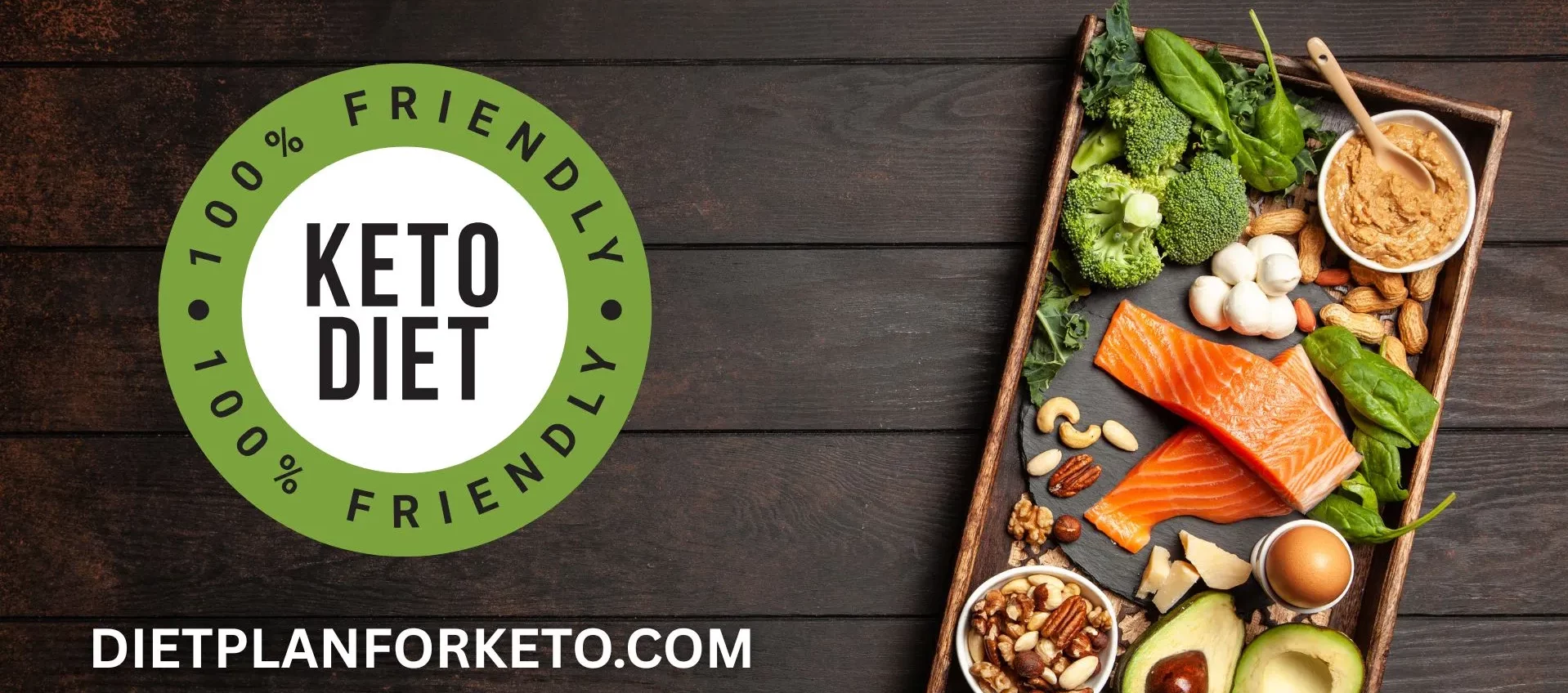The ketogenic (keto) diet has become one of the most popular low-carb diets for weight loss and improved health. Its promise of rapid fat loss, increased energy, and even cognitive benefits has led many people to try it.
However, while the keto diet can deliver impressive results, common mistakes can prevent you from reaping its full benefits. Whether you’re just starting or have been on keto for a while, understanding and avoiding these mistakes on keto is key to your success.
In this guide, we’ll cover some of the most common keto diet mistakes and provide practical tips on how to fix them so you can stay on track toward your goals.
1. Not Eating Enough Fat
One of the biggest mistakes people make on keto is not consuming enough fat. Keto is a high-fat, moderate-protein, and very low-carb diet. When you cut carbs drastically, your body relies on fat for energy. If you’re not eating enough fat, you may feel fatigued, experience intense hunger, and find it difficult to stay in ketosis.
How to Avoid This Mistake:
- Include healthy fats like avocado, olive oil, butter, coconut oil, and fatty cuts of meat in your diet.
- Track your macronutrient intake to ensure that 70-75% of your daily calories come from fat.
- Add fat-rich snacks like nuts or cheese to your meals to help reach your fat goals.
Pro Tip: It’s essential to focus on healthy fats. Relying on processed or low-quality fats can lead to other health issues.
2. Eating Too Much Protein
While protein is an important part of the keto diet, consuming too much can kick you out of ketosis. This is because excess protein can be converted into glucose through a process called gluconeogenesis, which may prevent you from burning fat for fuel.
How to Avoid This Mistake:
- Stick to moderate amounts of protein, typically around 20-25% of your daily calories.
- Opt for fattier cuts of meat like ribeye steak or chicken thighs rather than lean cuts.
- Avoid high-protein, low-fat snacks like protein bars or shakes that could throw off your macros.
Pro Tip: Use a keto macro calculator to determine the right amount of protein for your body and activity level.
3. Not Staying Hydrated
Dehydration is a common issue when starting the keto diet. As you reduce your carb intake, your body flushes out more water, leading to increased urine output. This can cause dehydration, which might lead to headaches, fatigue, and difficulty concentrating.
How to Avoid This Mistake:
- Drink plenty of water throughout the day, especially when first starting keto.
- Add electrolytes (sodium, potassium, magnesium) to your water or consume electrolyte-rich foods like leafy greens and nuts.
- Consider drinking bone broth, which is rich in electrolytes, to stay hydrated.
Pro Tip: Drinking water with a pinch of salt can help replenish electrolytes lost on keto, especially during the early stages of the diet.

4. Not Getting Enough Electrolytes
Along with dehydration, a lack of electrolytes is one of the common mistakes on keto that can lead to symptoms like headaches, dizziness, and cramping (often referred to as the “keto flu”). Since keto is a diuretic diet, your body flushes out electrolytes along with water, and it’s crucial to replenish them.
How to Avoid This Mistake:
- Make sure to consume foods rich in electrolytes, such as avocados (potassium), nuts (magnesium), and pickles (sodium).
- Use an electrolyte supplement or add pink Himalayan salt to your meals to boost sodium intake.
- Drink mineral water or use a magnesium supplement if needed to avoid cramps.
Pro Tip: Monitoring your electrolyte intake can help you avoid the dreaded keto flu and maintain energy levels.
5. Eating Hidden Carbs
One of the most common keto diet mistakes is unknowingly consuming hidden carbs. Many packaged or processed foods contain added sugars or carbs, even when marketed as “keto-friendly.”
How to Avoid This Mistake:
- Read labels carefully and watch for ingredients like maltodextrin, dextrose, or hidden sugars.
- Stick to whole foods like meat, eggs, vegetables, and healthy fats as much as possible.
- Limit processed foods and always check the net carbs on labels before buying.
Pro Tip: Apps like MyFitnessPal can help you track your carb intake and avoid foods that sneak carbs into your diet.
6. Not Enough Vegetables
Some people mistakenly avoid vegetables on keto due to their carb content. However, non-starchy vegetables are low in carbs and high in fiber, which is essential for digestion and overall health. Failing to eat enough vegetables can lead to nutrient deficiencies and digestive issues.
How to Avoid This Mistake:
- Focus on low-carb vegetables like spinach, broccoli, cauliflower, and zucchini.
- Aim for 5-10 servings of non-starchy vegetables daily to ensure you get enough fiber and nutrients.
- Add healthy fats to your vegetables by sautéing them in butter or drizzling them with olive oil.
Pro Tip: Leafy greens are particularly keto-friendly and can be added to meals easily without worrying about carb overload.
7. Being Afraid of Calories
While keto isn’t necessarily about counting calories, many people make the mistake of drastically cutting calories because they think it will speed up weight loss. However, eating too few calories can lead to nutrient deficiencies, metabolic slowdown, and stalled weight loss.
How to Avoid This Mistake:
- Focus on nutrient-dense foods rather than restricting calories too much.
- Eat enough to support your body’s energy needs and avoid feeling deprived.
- Track your food intake for a few days to ensure you’re eating enough to fuel your body.
Pro Tip: If you notice a weight loss stall, focus on adjusting your macros rather than just cutting calories.
8. Cheating Too Often
Some people follow keto strictly during the week but indulge in high-carb foods on the weekends or for special occasions. While the occasional treat might not derail your progress, frequent carb cheats can throw you out of ketosis and make it harder to get back on track.
How to Avoid This Mistake:
- Plan your meals ahead of time to avoid impulsive cheats.
- Find keto-friendly alternatives to your favorite treats (e.g., keto brownies or fat bombs).
- If you do cheat, jump back into keto right away rather than letting one cheat meal turn into several.
Pro Tip: Try intermittent fasting after a cheat day to help your body get back into ketosis faster.
9. Overeating Keto-Friendly Foods
Just because a food is keto-friendly doesn’t mean you can eat unlimited amounts. Overeating high-fat, low-carb foods like cheese, nuts, or keto snacks can lead to a calorie surplus, which may slow your weight loss progress.
How to Avoid This Mistake:
- Be mindful of portion sizes, even with keto-friendly foods.
- Track your daily calorie intake to ensure you’re staying within your goals.
- Balance your meals with protein, healthy fats, and non-starchy vegetables to feel satisfied without overeating.
Pro Tip: If you find yourself snacking too much, try eating larger, more satisfying meals to curb the urge to graze throughout the day.
10. Expecting Instant Results
Many people jump into the keto diet expecting to lose weight quickly, but one of the biggest mistakes on keto is having unrealistic expectations. While some may see rapid weight loss in the first few weeks, progress can slow down as your body adjusts.
How to Avoid This Mistake:
- Be patient and consistent. Remember, weight loss on keto is not always linear.
- Focus on non-scale victories like improved energy, better focus, and reduced cravings.
- Keep track of your progress with photos, measurements, and how you feel rather than just relying on the scale.
Pro Tip: Set realistic goals and give your body time to adjust to the diet before expecting major results.
Common Keto Diet Mistakes: The Bottom Line
The keto diet offers incredible benefits, but only when followed correctly. By understanding and avoiding these common keto diet mistakes, you’ll have a much better chance of achieving your weight loss and health goals. Remember that it takes time, effort, and consistency to see the best results. Stay hydrated, watch your macros, and make sure you’re getting enough nutrients from a well-balanced, low-carb diet.
Conclusion: Stay Consistent and Avoid Pitfalls
Avoiding these mistakes on keto can help you get the most out of this low-carb, high-fat lifestyle. From tracking your macros to ensuring you’re staying hydrated and consuming enough electrolytes, success on keto is all about balance and consistency.
If you’re struggling to stay on track or want additional support, consider joining keto forums, connecting with others on social media, or downloading apps that help you monitor your progress. With the right mindset and awareness of these common mistakes, you’ll be well on your way to achieving your keto goals!
By understanding the common keto diet mistakes outlined here and following simple strategies to avoid them, you’ll set yourself up for long-term success on the ketogenic diet. Stay patient, stay consistent, and enjoy the journey to better health!
